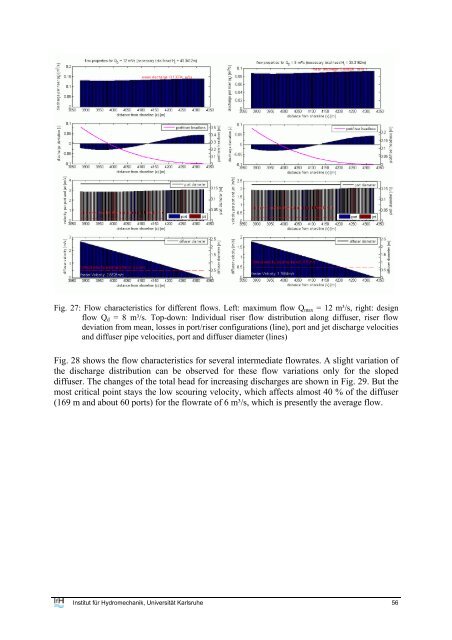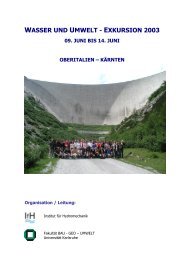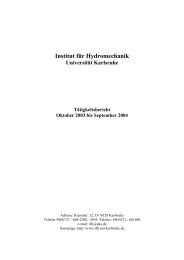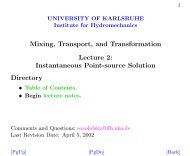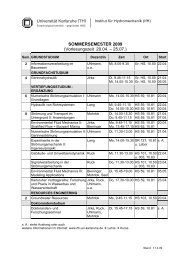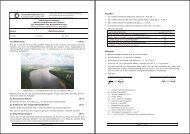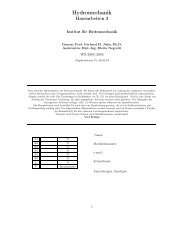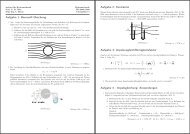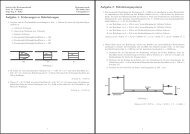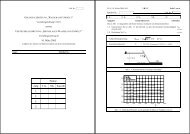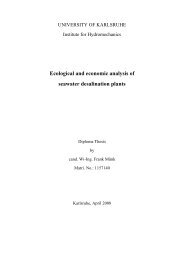user's manual for corhyd: an internal diffuser hydraulics model - IfH
user's manual for corhyd: an internal diffuser hydraulics model - IfH
user's manual for corhyd: an internal diffuser hydraulics model - IfH
You also want an ePaper? Increase the reach of your titles
YUMPU automatically turns print PDFs into web optimized ePapers that Google loves.
Fig. 27: Flow characteristics <strong>for</strong> different flows. Left: maximum flow Q max = 12 m³/s, right: design<br />
flow Q d = 8 m³/s. Top-down: Individual riser flow distribution along <strong>diffuser</strong>, riser flow<br />
deviation from me<strong>an</strong>, losses in port/riser configurations (line), port <strong>an</strong>d jet discharge velocities<br />
<strong>an</strong>d <strong>diffuser</strong> pipe velocities, port <strong>an</strong>d <strong>diffuser</strong> diameter (lines)<br />
Fig. 28 shows the flow characteristics <strong>for</strong> several intermediate flowrates. A slight variation of<br />
the discharge distribution c<strong>an</strong> be observed <strong>for</strong> these flow variations only <strong>for</strong> the sloped<br />
<strong>diffuser</strong>. The ch<strong>an</strong>ges of the total head <strong>for</strong> increasing discharges are shown in Fig. 29. But the<br />
most critical point stays the low scouring velocity, which affects almost 40 % of the <strong>diffuser</strong><br />
(169 m <strong>an</strong>d about 60 ports) <strong>for</strong> the flowrate of 6 m³/s, which is presently the average flow.<br />
Institut für Hydromech<strong>an</strong>ik, Universität Karlsruhe 56


